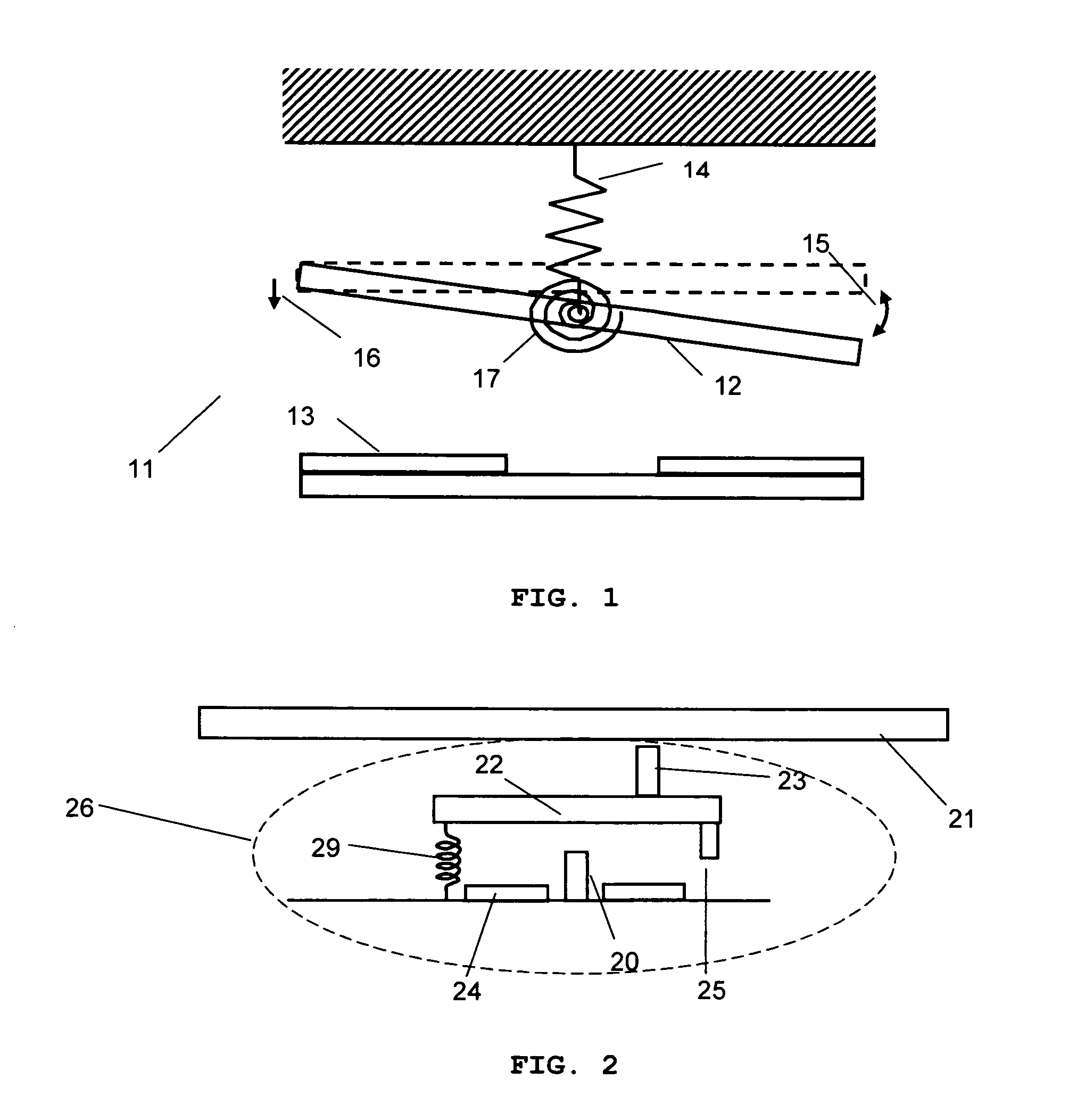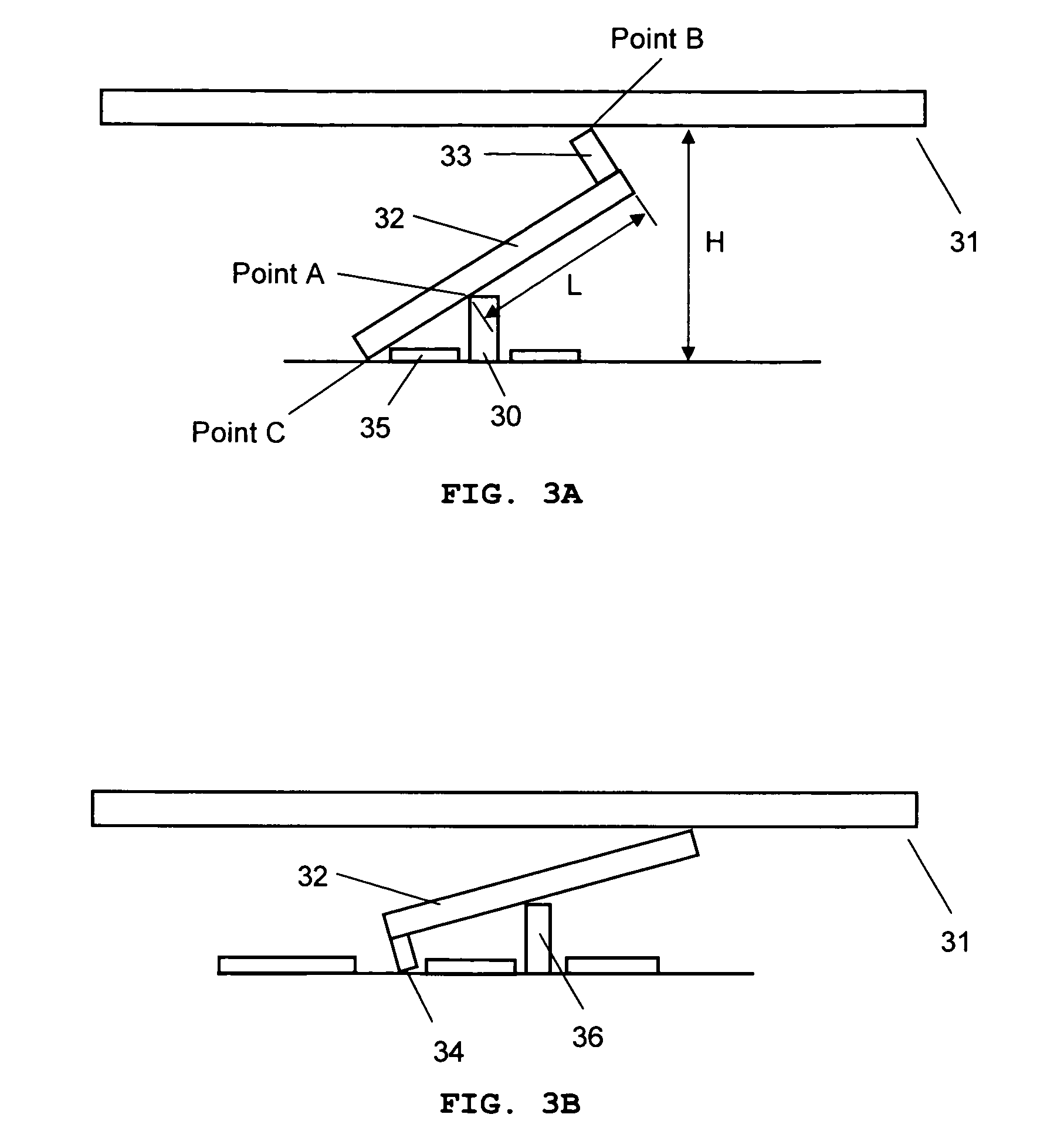Multi-step microactuator providing multi-step displacement to a controlled object
a microactuator and control object technology, applied in the direction of electrostatic generator/motor, electrostatic motor, instruments, etc., can solve the problems of high driving voltage, more complex than digital or discrete control, and incompatible with known semiconductor technologies such as mos, cmos, etc., and achieve the effect of simple driving method
- Summary
- Abstract
- Description
- Claims
- Application Information
AI Technical Summary
Benefits of technology
Problems solved by technology
Method used
Image
Examples
Embodiment Construction
[0018]FIG. 1 shows schematic diagram of a microactuator system 11 giving continuous displacement to the object 12. The object 12 is controlled to have a continuous rotation 15 or translation 16, which is determined by the equilibrium between electrostatic force between the electrode 13 and the object 12 and elastic force of the translational spring 14 and the rotational spring 17. The object 12 is rotated along the hinge supported by the supporting structure. Since the displacement is determined by the equilibrium of the electrostatic and elastic forces, complex analog control with active feedback is required to have a fine control of the motion.
[0019]On the other hand, the multi-step microactuator has simpler control system. Once the motion is defined and programmed in the microactuator, the control is just applying the on / off voltage for desired channel with respect to the desired motion. No feedback is required and the motion is reproducible regardless of the environment.
[0020]Th...
PUM
 Login to View More
Login to View More Abstract
Description
Claims
Application Information
 Login to View More
Login to View More - R&D
- Intellectual Property
- Life Sciences
- Materials
- Tech Scout
- Unparalleled Data Quality
- Higher Quality Content
- 60% Fewer Hallucinations
Browse by: Latest US Patents, China's latest patents, Technical Efficacy Thesaurus, Application Domain, Technology Topic, Popular Technical Reports.
© 2025 PatSnap. All rights reserved.Legal|Privacy policy|Modern Slavery Act Transparency Statement|Sitemap|About US| Contact US: help@patsnap.com



